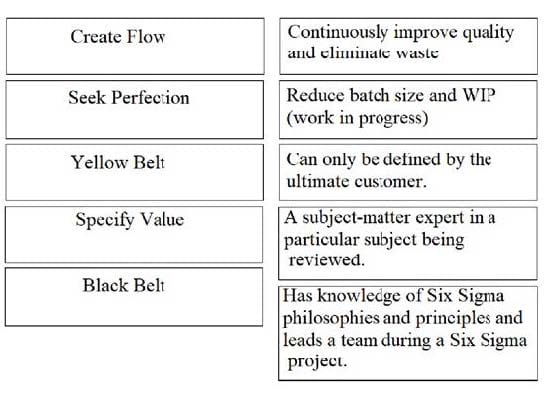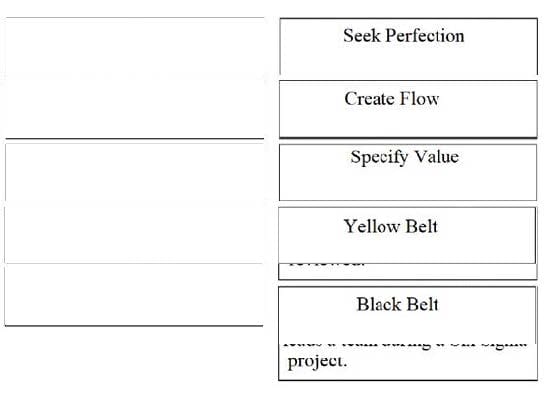LSSWB Online Practice Questions and Answers
The statistical difference between a process operating at a 5 sigma level and a process operating at a 6 sigma level is markedly different when it comes to the number of defects present.
A. True
B. False
Which of the following Belt Levels usually require a Six Sigma Project be completed before a Six Sigma Certification is awarded?
A. White Belt
B. Yellow Belt
C. Green Belt
D. Black Belt
E. Master Black Belt
F. None of the Above
G. All of the above
Which of the following is NOT a similarity between Lean and Six Sigma concepts?
A. They are both concerned with continuous improvement.
B. They both seek to increase instances of waste within an organization.
C. They are both concerned with an overall culture of quality rather than single events that increase quality and decrease defects.
According to the TQM mentality, the entire organization is only as strong as the ________ element.
A. strongest
B. weakest
C. least productive
D. most productive
Which of the following is used to select the process of sampling plan?
A. DODGE ROMIG Table.
B. AOQL ANSI Table.
C. ATI and LTPD Measures.
D. None of the above.
What is Ppk in six sigma belt?
A. It is a measuring process to measuring the average speed of production.
B. It is a diagram displaying the sequential steps of an production.
C. It's term is used for measuring the data of employee performances of a company during a year.
D. This is the index of the performance of a process.
What is the use of ANOVA in Six Sigmas?
A. ANOVA is a method of calculation.
B. It determines the means of various continuous data.
C. Both of the above.
D. None of the above.
Which of the following is true about Shewhart Chart?
A. This chart is made for determining the growth of a company
B. It shows whether the process of a business is reliable or not.
C. It represents the growth of the process of any business.
D. None of the above.
What do you understand by Mura in six sigma?
A. Mura is known as the raw materials.
B. Mura is the name of a product.
C. Mura is the term of waste.
D. Mura is the term of unused elements.
Sort, Straighten, Shine, Standardize, Sustain. These are known in six sigmas as: A. The Step of Sustain.
B. The S Factor.
C. The 5S
D. None.
A senior executive within the organization whose role is sponsoring specific projects.
A. Master Black Belt
B. Primary Executive Sponsor
C. Champion
D. Black Belt
The idea behind Six Sigma is to minimizing defects in production through continuous improvements of the process.
A. True
B. False
The Six Sigma concept redefines quality performance in terms of defects per million opportunities (dpmo).
A. True
B. False
Technical requirements are sometimes called design characteristics.
A. True
B. False


